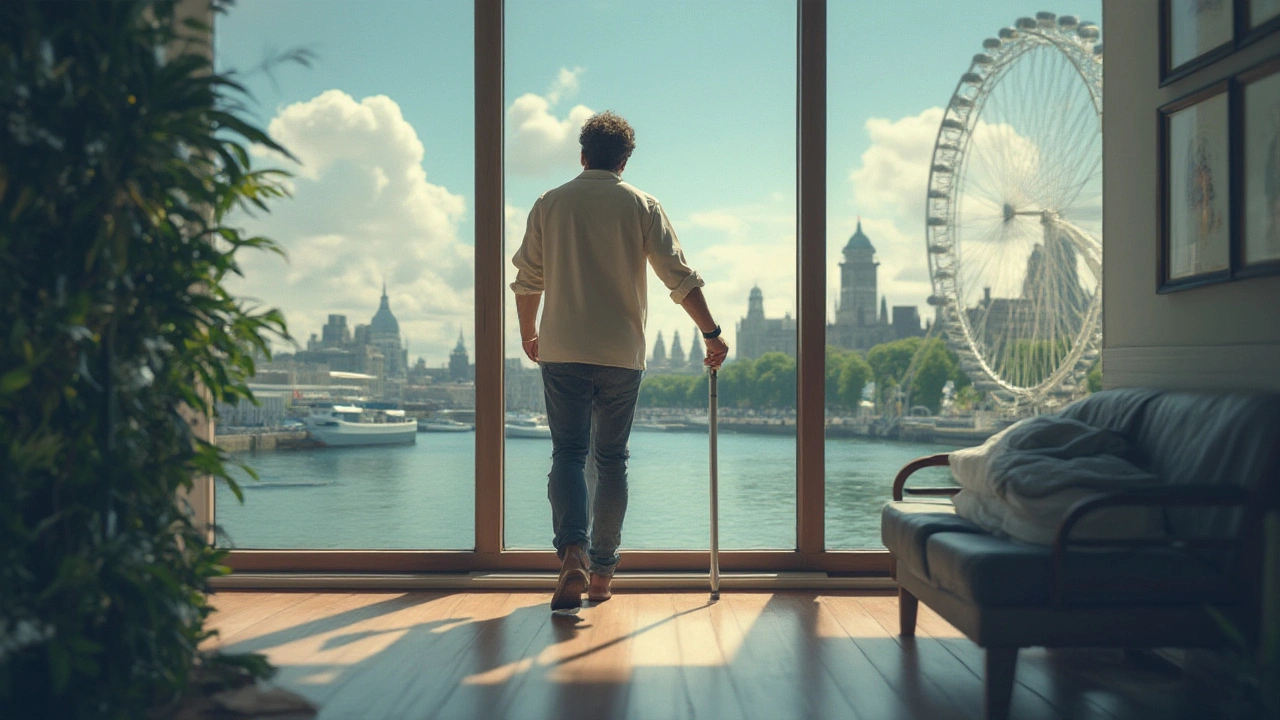If you really want to experience a massage that goes beyond the typical spa routine, you might want to lie down on a table run by someone who “sees” with their fingertips. That’s the fascinating reality behind blind massage. It’s booming across Asia, catching on in Europe, and popping up in cities globally for a reason: it feels different, sometimes dramatically so.
People often imagine touch as an ordinary thing, something you miss when scrolling on your phone. But for visually impaired massage therapists, touch becomes a superpower. They tune into tiny changes in muscles, temperature, posture and tension the rest of us overlook. Their sense of empathy—honed by listening rather than seeing—often gives a session an intensity that surprises even the skeptics. This is not just gentle storytelling. It’s grounded in professional studies. According to the Chinese Association for the Blind, around 80% of the country’s registered massage therapists are visually impaired, and many of their clients report higher satisfaction rates compared to standard clinics. Why? Let’s dig into what makes these massages stand out and why, once you try one, you’ll probably get hooked.
What Sets Blind Massage Apart?
Blind massage isn’t a marketing gimmick—it’s a respected therapeutic tradition, especially in China, Thailand, and Indonesia, where it’s been around for decades. In Shanghai, for example, there are government-backed schools just for visually impaired therapists. They spend a year or more learning anatomy, mastering different methods like Tuina or Shiatsu, and practicing on volunteers before they ever work with a paying customer.
So, why do people swear by these treatments? Because when you close your eyes, the brain boosts attention in other senses. Studies from the University of Montreal have shown that blind people process touch with greater acuity than sighted peers, sometimes detecting grooves as fine as 0.5mm deep—better than most sighted massage therapists.
But it isn’t just physical. One regular client told me she noticed her blind therapist always finds knots that others miss. “He can tell what my body needs—he feels when I’m tense, tired, or just want to relax.” That “emotional reading” comes partly from relying more on what they hear or feel, which helps tailor each session to the mood in the room.
Some clients feel less self-conscious, too. Without eye contact, they’re able to fully let go during the session, which sometimes isn’t easy in a bright room with lots of mirrors. It’s private, safe, and surprisingly liberating.
How Blind Massage Therapists Train
If you’re picturing a room full of people getting back rubs from folks who just “happen” to be blind, you’ve got the wrong idea. Training is both rigorous and scientific. In Beijing, for instance, blind massage schools require hundreds of supervised hours—students memorize bone structures, study pressure points by touch, and learn to identify illnesses through subtle muscle cues.
This isn’t an easy profession. The curriculum is as demanding as what sighted therapists face. Blind students work with life-sized anatomical models for weeks. They’re drilled daily on the structures of the neck, spine, and lower limbs—areas prone to pain from desk jobs and smartphone slouching.
Here’s a look at a typical week:
- Anatomy lessons: Using tactile diagrams and hands-on practice
- Massage technique drills: Focusing on pressure levels, hand posture, and rhythm, without relying on visuals
- Listening skills: Picking up changes in breathing or tensing
- Self-care classes: Preventing hand and wrist fatigue or injury
- Customer feedback: Practicing sessions with feedback from clients and instructors
Only those who pass written (in Braille or audio) and practical exams get certified. This keeps the bar high and protects clients from unskilled touch.
Many blind massage therapists stay updated by taking continuing education courses. Some specialize in therapeutic work with stroke survivors or chronic pain clients. Others mix in elements of aromatherapy or hot stone massage.

Hidden Benefits You Didn’t Expect
Regular massage comes with well-known perks: reduced pain, lower stress hormones, better sleep, and looser muscles. But with blind massage, there are some extras you might not think about:
- Heightened spatial sensitivity: A blind therapist might notice small differences in tissue consistency, which helps identify stubborn knots or blocked energy channels.
- Unique atmosphere: Sessions are often quieter and more meditative, with dimmer lighting—handy if you’re the type who gets headaches from harsh lights.
- Non-judgmental environment: Without visual distractions, many clients say they feel more at ease with their bodies, which can be empowering if you’re self-conscious.
- Consistent attention: Therapists rely closely on routine, which means every session follows the basics but can also be adapted if you ask for something specific.
- Affordable prices: In places like China, blind massage clinics usually cost less than luxury spas, making them a more regular habit for office workers and students.
The World Health Organization even lists massage as a recommended support for certain types of musculoskeletal pain and rehabilitation—and blind massage falls right in line with these protocols.
Here’s a quick look at reported client satisfaction rates for blind vs. standard massages, drawn from a Beijing survey:
| Therapist Type | Client Satisfaction | Chance of Repeat Visit |
|---|---|---|
| Blind Therapist | 92% | 87% |
| Sighted Therapist | 77% | 70% |
Pretty striking difference for something as simple as touch.
Tips for Booking Your First Blind Massage
Ready to see (or feel) what all the fuss is about? Great, but there are a few things you should keep in mind. Unlike big-chain spas, many blind massage clinics are small businesses. They might not have fancy storefronts or long menus of add-ons, but don’t let that fool you—the blind massage experience can be just as professional, often more so.
- Check credentials: Look for clinics certified by local health departments or registered blind associations. This helps ensure your therapist is properly trained.
- Be clear about pressure: Everyone’s pain threshold is different; don’t be afraid to speak up if you want more or less intensity.
- Arrive early: This gives you time to fill out any necessary forms and chat about your goals—do you want relief from tech-neck or just to de-stress?
- Communicate your comfort level: If there are areas you don’t want touched, say so at the start. Most therapists will check in before each session anyway.
- Turn off your phone: Blind massage sessions often take place in serene settings, so give yourself permission to unplug for an hour.
- Bring cash: Some independent clinics still don’t take cards or mobile apps.
- Observe hygiene: While most places are scrupulously clean, if you’re concerned, ask to see the changing rooms or linens.
Most therapists will ask a few brief questions about your health history—prior surgeries, current medications, or any allergies. If you have chronic pain or a specific injury, don’t hold back. The more they know, the better they can help.
It’s totally normal to feel nervous the first time. But by the end, you may find yourself so deeply relaxed you wonder why you didn’t try this sooner. You can always start small—book a thirty-minute session instead of an hour, or go with a friend for moral support.

Blind Massage Around the World: Stories and Surprises
It’s been less than five years since blind massage hit the mainstream in cities like New York and London, but the movement has been a lifesaver—literally and figuratively—across Asia. One massage therapist in Jakarta told Reuters that his business doubled after tourists began reviewing his sessions online. Now, he’s booked out weeks in advance and employs six other visually impaired masseurs.
In Shanghai, several clinics were set up in hospital lobbies right during the pandemic. They offered discounted rates for nurses and delivery drivers—sometimes free for healthcare heroes. The result? A lot of patients who felt nervous in clinical settings actually said the soothing atmosphere and attentive touch helped with anxiety before or after medical treatment.
Stories abound from people who found unexpected healing. One woman with fibromyalgia credits her blind therapist’s "intuitive hands" for cutting her flare-ups in half. Office workers battling wrist and back fatigue from endless Zoom calls tell friends about deep relief—something gentle apps and foam rollers just couldn’t provide.
This isn’t limited to adults. Some parents bring kids with sensory processing disorders because they respond positively to the slow, rhythmic pressure and non-visual environment. And if you’re thinking this sounds nice but you don’t do well with strangers—plenty of therapists offer at-home sessions as well.
There’s also an empowerment story here. In countries where job options are limited for the blind, massage offers steady income, community, and personal pride. There are national competitions, with prizes for technique and client care.
If you want to support a local blind massage therapist, check reviews on dedicated massage apps, or ask your neighborhood wellness clinic if they have any recommendations. And who knows, you might end up making it part of your self-care routine, right up there with walking your dog on a Sunday morning (I can’t skip Hercules’ park time, and I won’t judge if you carve out an hour for yourself, too).


 Health and Wellness
Health and Wellness